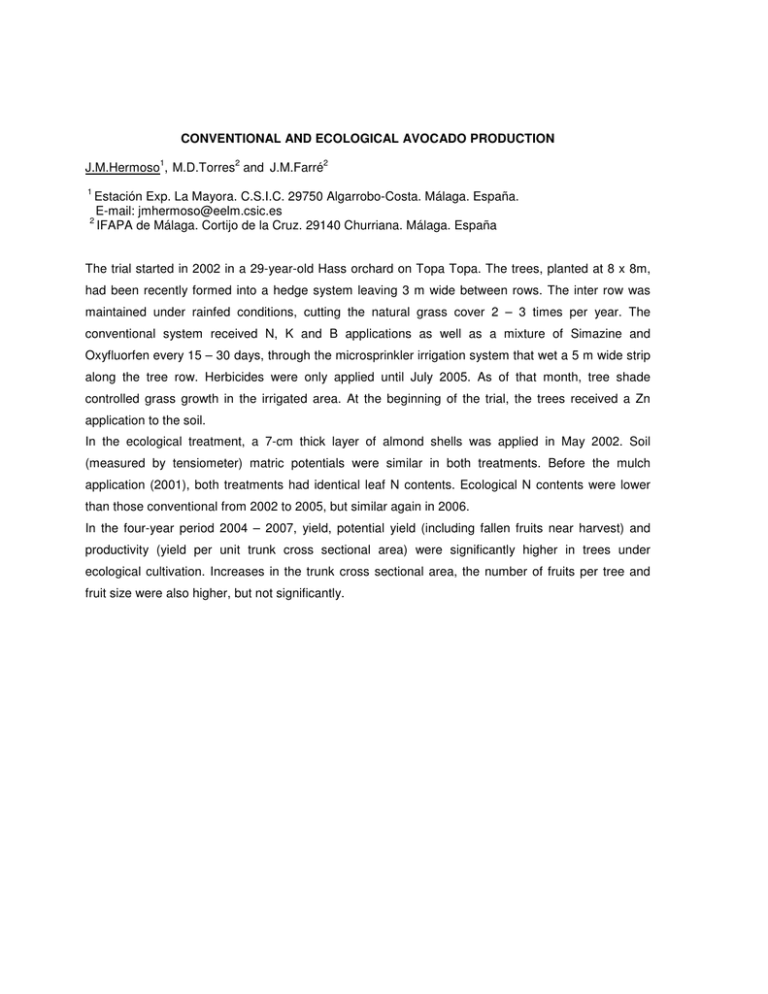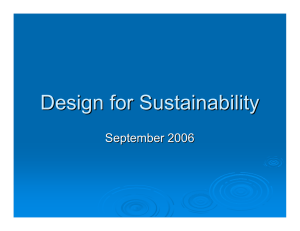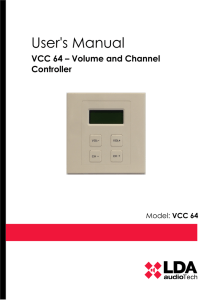CONVENTIONAL AND ECOLOGICAL AVOCADO PRODUCTION J.M.Hermoso ,
advertisement

CONVENTIONAL AND ECOLOGICAL AVOCADO PRODUCTION 1 2 2 J.M.Hermoso , M.D.Torres and J.M.Farré 1 Estación Exp. La Mayora. C.S.I.C. 29750 Algarrobo-Costa. Málaga. España. E-mail: jmhermoso@eelm.csic.es 2 IFAPA de Málaga. Cortijo de la Cruz. 29140 Churriana. Málaga. España The trial started in 2002 in a 29-year-old Hass orchard on Topa Topa. The trees, planted at 8 x 8m, had been recently formed into a hedge system leaving 3 m wide between rows. The inter row was maintained under rainfed conditions, cutting the natural grass cover 2 – 3 times per year. The conventional system received N, K and B applications as well as a mixture of Simazine and Oxyfluorfen every 15 – 30 days, through the microsprinkler irrigation system that wet a 5 m wide strip along the tree row. Herbicides were only applied until July 2005. As of that month, tree shade controlled grass growth in the irrigated area. At the beginning of the trial, the trees received a Zn application to the soil. In the ecological treatment, a 7-cm thick layer of almond shells was applied in May 2002. Soil (measured by tensiometer) matric potentials were similar in both treatments. Before the mulch application (2001), both treatments had identical leaf N contents. Ecological N contents were lower than those conventional from 2002 to 2005, but similar again in 2006. In the four-year period 2004 – 2007, yield, potential yield (including fallen fruits near harvest) and productivity (yield per unit trunk cross sectional area) were significantly higher in trees under ecological cultivation. Increases in the trunk cross sectional area, the number of fruits per tree and fruit size were also higher, but not significantly.



